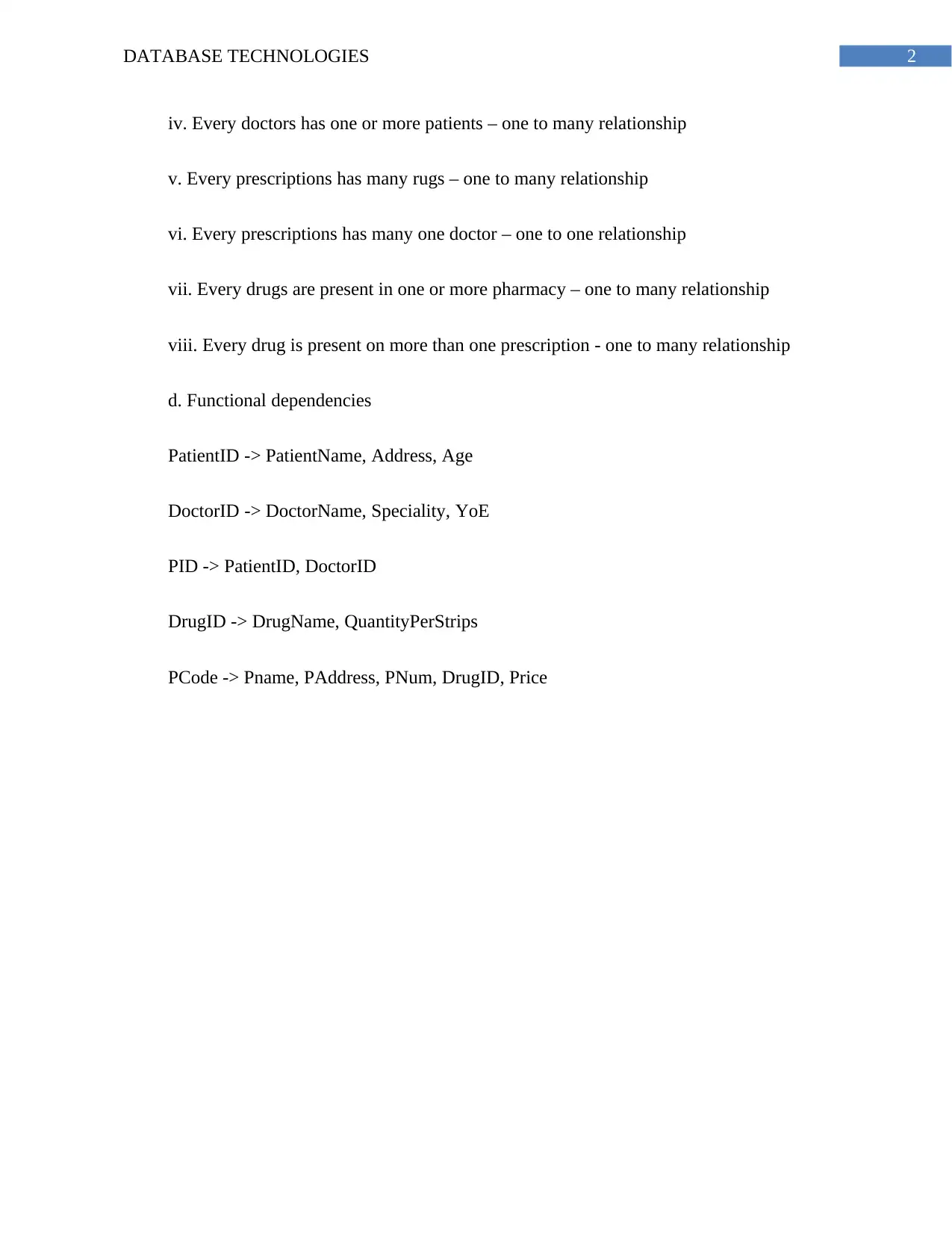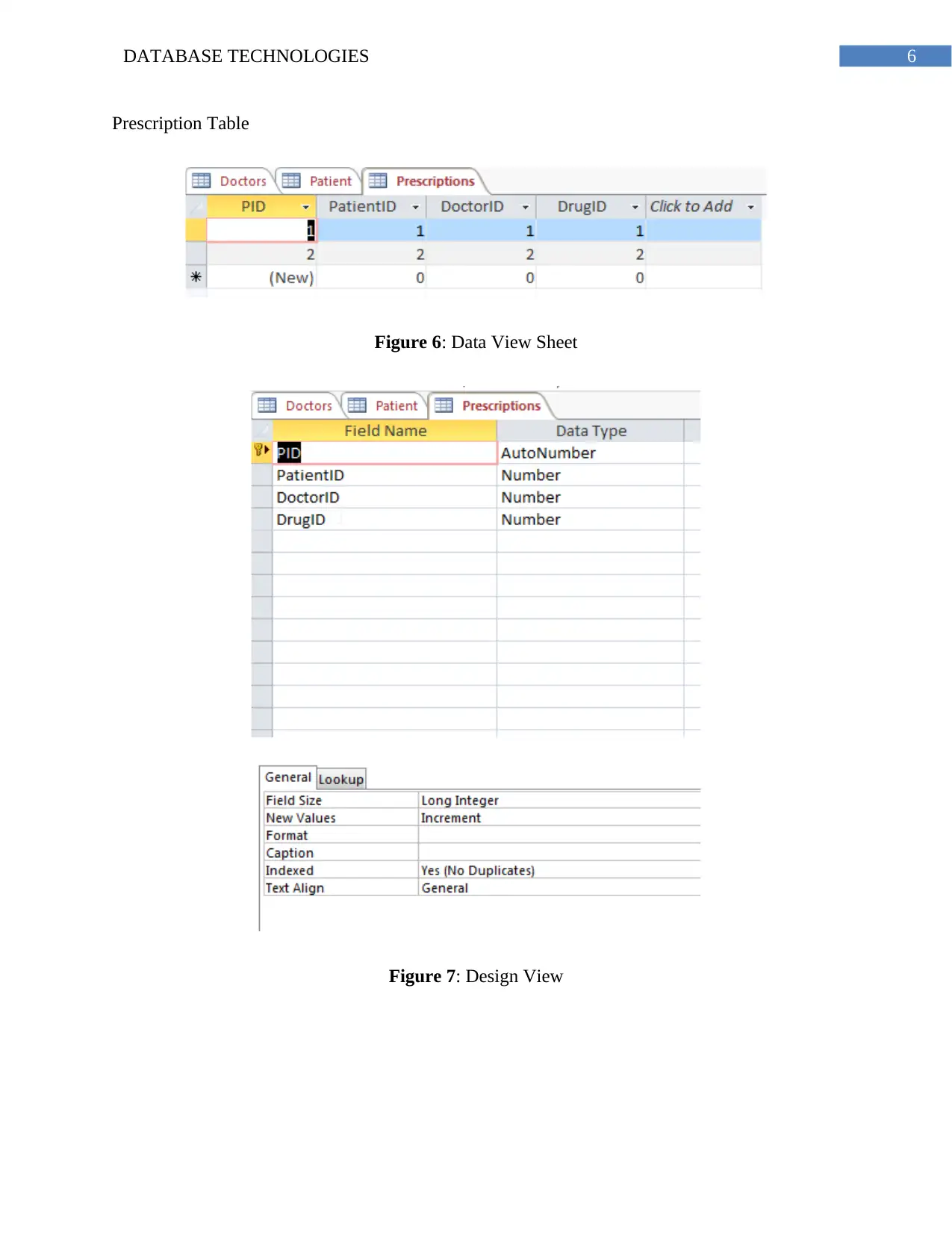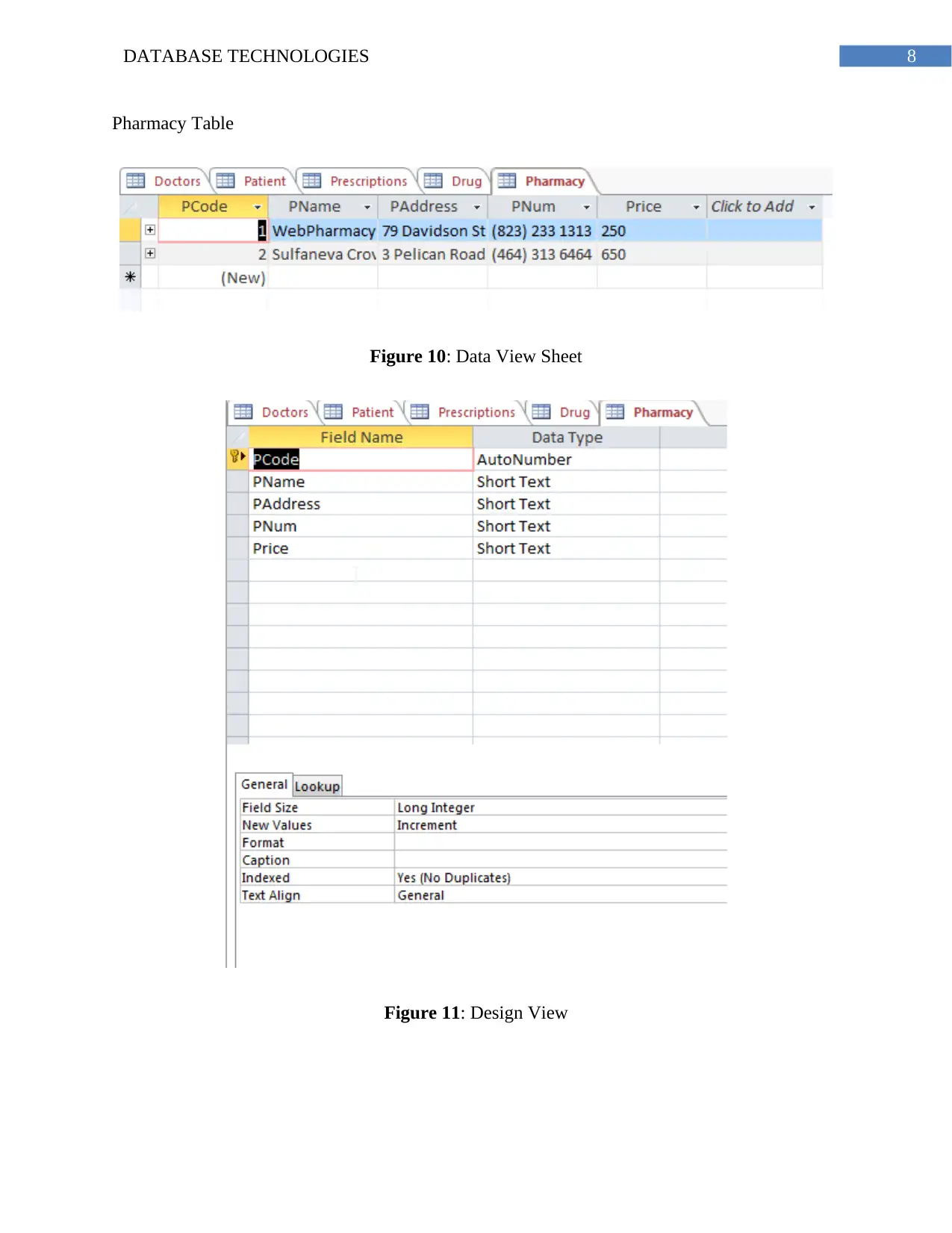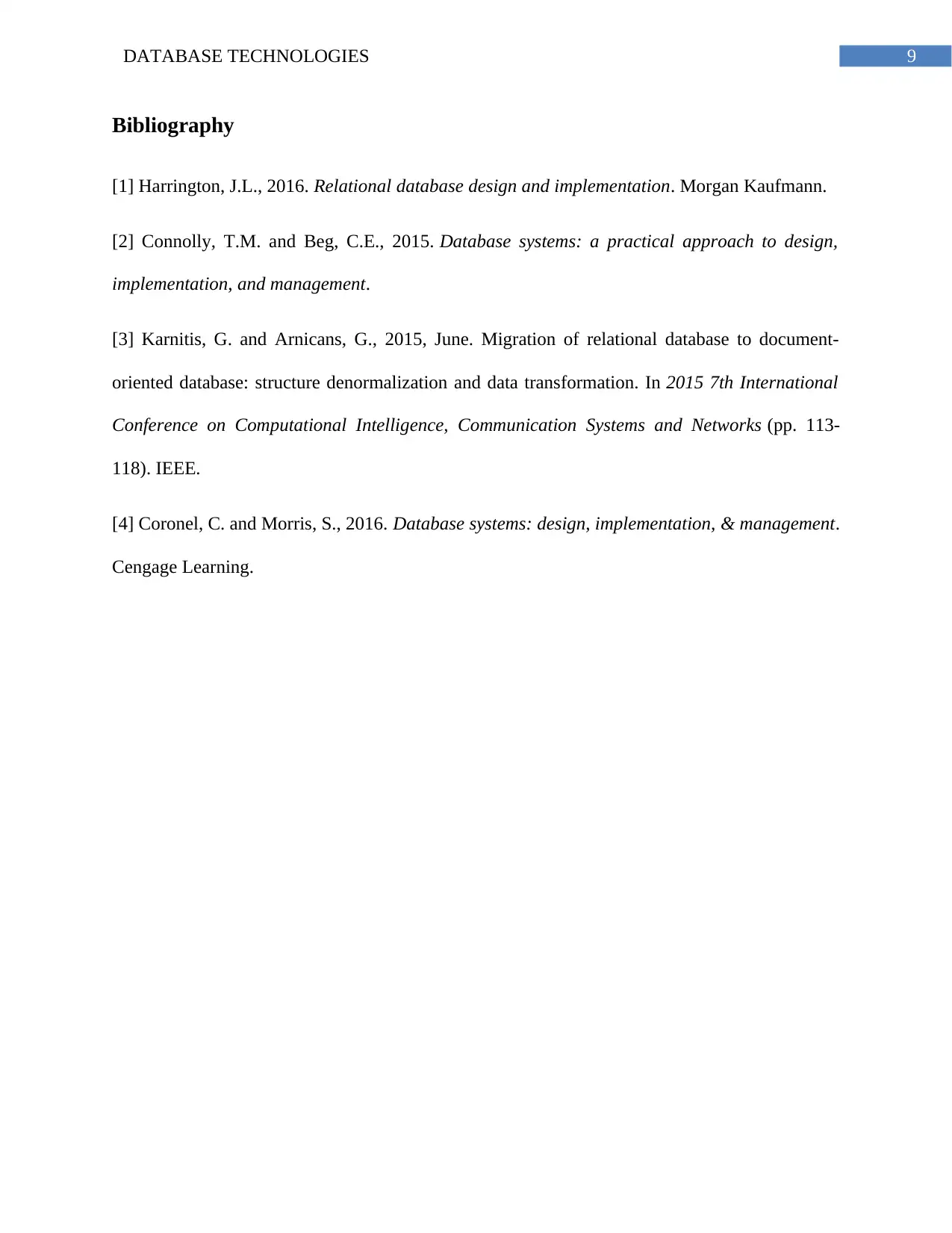BN204 Database Technologies Assignment: Knox Hospital Database Design
VerifiedAdded on 2022/11/17
|10
|496
|1
Practical Assignment
AI Summary
This assignment solution for the BN204 Database Technologies course focuses on data model development and implementation. The solution begins by outlining the entities, attributes, and relationships for a case study involving Knox Private Hospital, detailing the design of a relational database. An Entity Relationship Diagram (ERD) visually represents the database structure. The assignment proceeds to demonstrate the implementation of the database using MS Access, providing screenshots of table designs and data views for the Patient, Doctor, Prescription, Drug, and Pharmacy tables. The solution also includes the functional dependencies. The document concludes with a bibliography of relevant database design and implementation resources. This assignment provides a comprehensive guide to data modeling and database implementation within a practical context.
1 out of 10














![[object Object]](/_next/static/media/star-bottom.7253800d.svg)